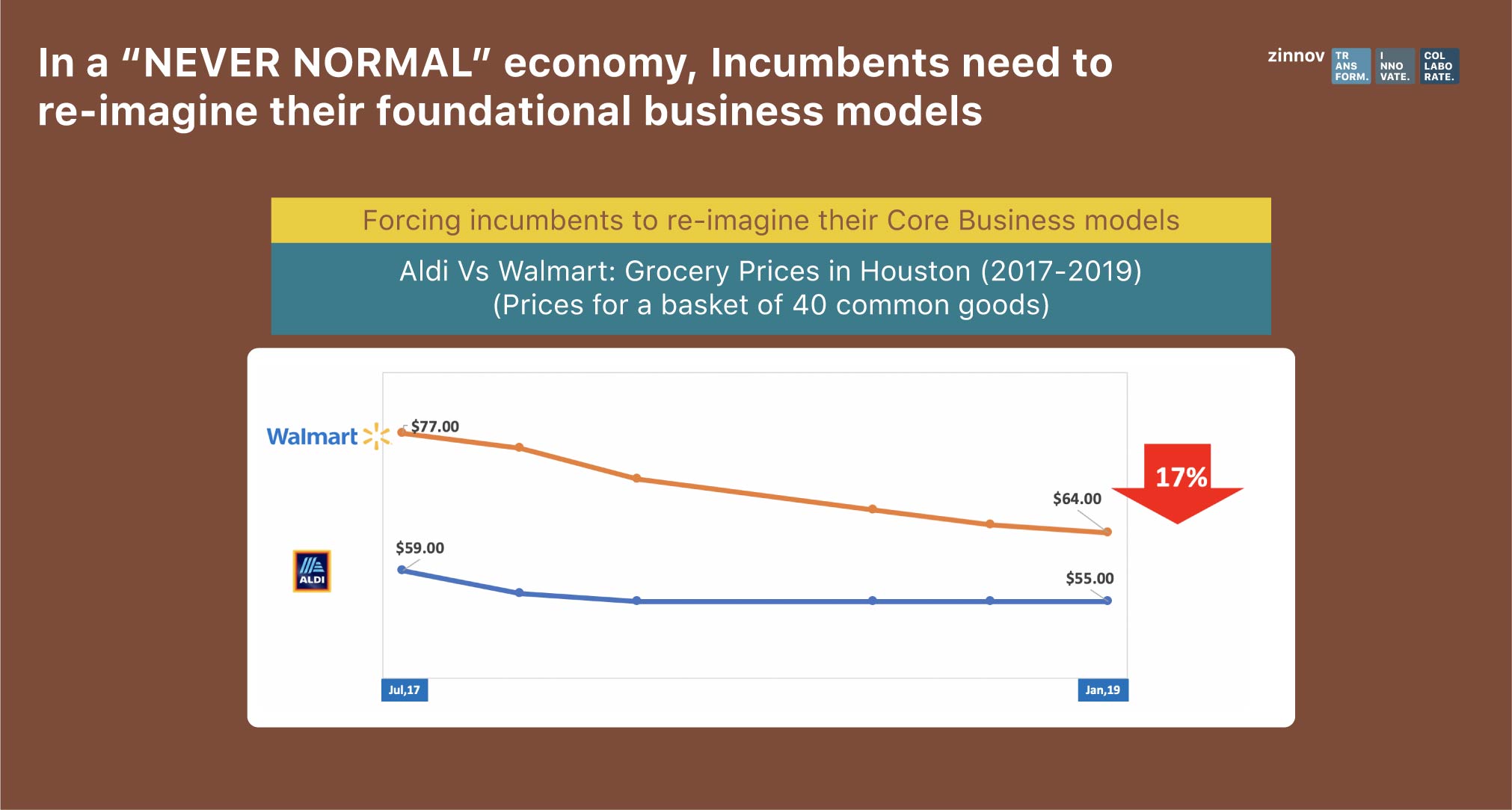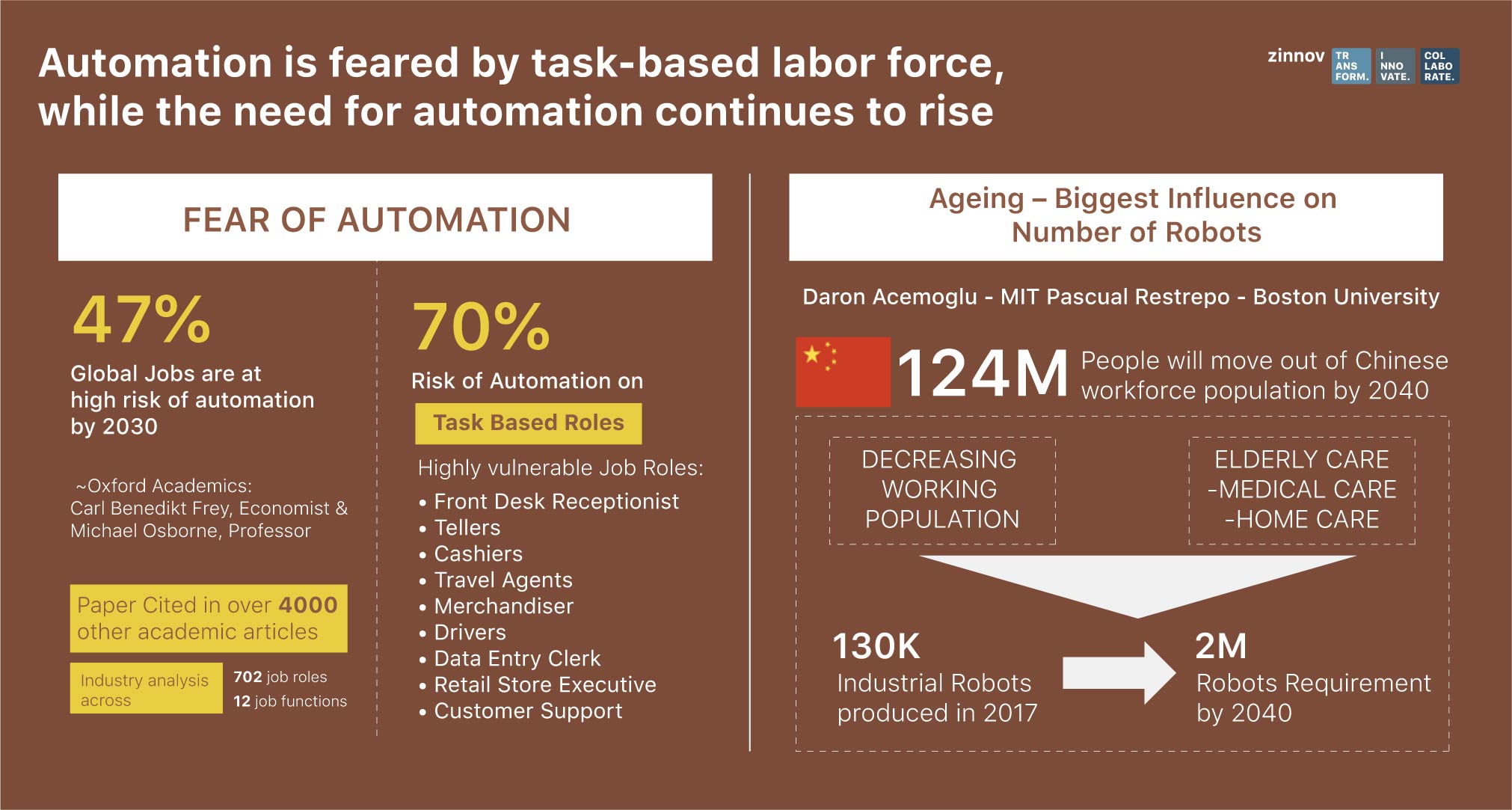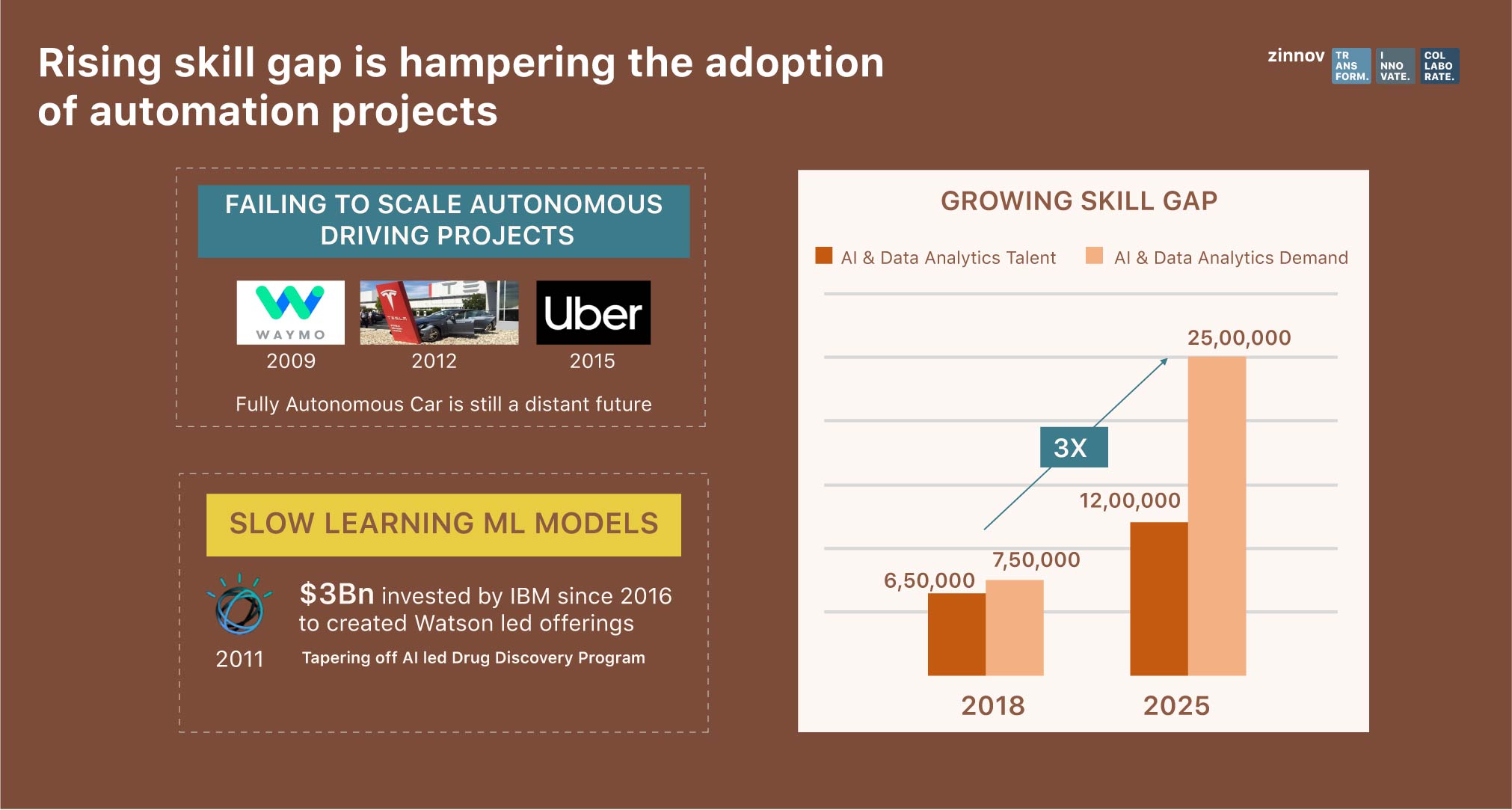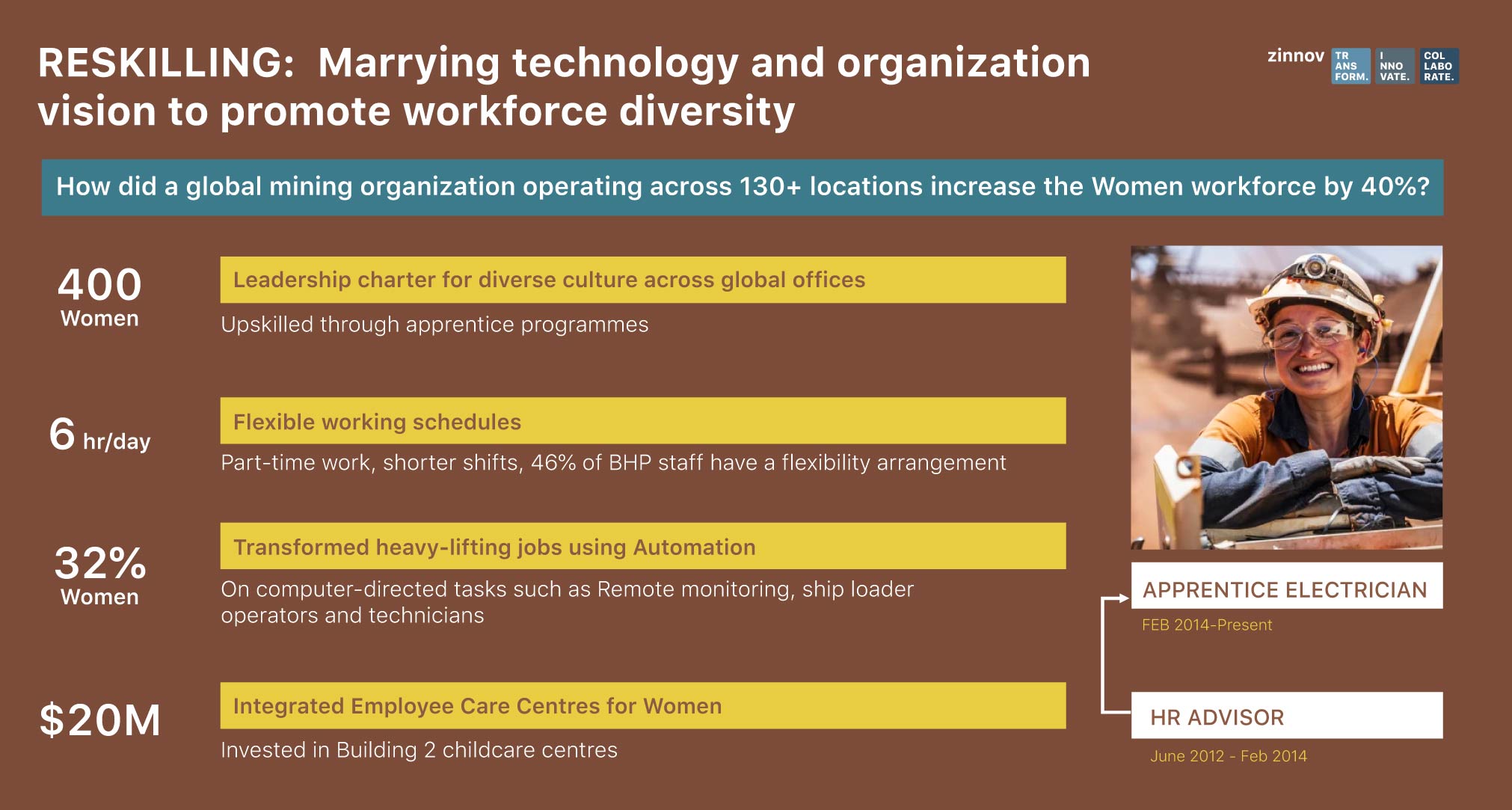|
|
Talent is everything – The key enabler, a vital catalyst, and an inevitable component in the success narrative of organizations – big and small.
Putting people first is no longer a leadership fad, or a mere fancy vision statement that finds its place in elaborate boardrooms. Talent is not just a support component but the very engine that is at the helm and drives growth in an organization. It is strongly capable of slingshotting organizations to unprecedented heights or make them plummet to hit a new low.
With the ubiquitous digital transformation accentuating the dire need for skilled talent, how are Enterprises blitzscaling their talent strategies to stay ahead in the race? Read on.
According to Greek mythology, the fabled phoenix bird is said to live for 500 years or more and is known to cyclically regenerate itself.
Taking inspiration from the mythical creature, Enterprises need to continuously reinvent themselves with respect to their talent strategies to handle the dynamic talent landscape today.
The DRAUP team at Zinnov, in a view to understanding talent which is the fulcrum of businesses today, studied the various trends that are prevalent in the new age talent landscape. Let us delve into what’s in vogue in the talent market, and how reinventing is the way forward.
With an ever-changing economy and a dynamic talent landscape, the incumbents are being forced to reimagine their fundamental business models. An intriguing case in point is Aldi, and how it is disrupting the Retail space.
Aldi, a supermarket chain native to Germany is posing serious competition to the retail giant Walmart in the least expected ways. Aldi does not disrupt Walmart from a technology standpoint, but races past Walmart in an aspect they are best known for – cost savings. (Core business model transformation)
The following are the features of the store which has led them to industry-leading efficiencies and has allowed their customers to save a whopping USD 2.2Bn per year:
• Long conveyor belts to reduce queue
• Just-in-time procurement
• Multiple enlarged Barcodes on products
• Seated employees: Scan and Work Faster
• Minimum Staffing
• Cross-functional Employees
• Vendors’ Supply of 1300 essential items
These aspects have enabled Aldi to cause significant disruption in the retail industry to the extent of Walmart being forced to bring down the prices of 40 common goods by 17% in Houston, to keep pace with them.

What is evident from this case study is the clear inclination of Aldi towards people-focused workforce strategy vis-a-vis the automation stance that most organizations are taking. Even though this approach has worked well for Aldi, Automation is the future and is emerging as an inevitable new-age talent strategy.
Aldi’s talent strategy is a clear-cut example of how automation is feared, especially by the task-based workforce. But that doesn’t take away the spotlight from the blatant necessity of the day that automation is.
This solicits quoting two researchers who have done visionary work on Automation.
The first one is a research by Carl Benedikt Frey & Michael Osborne who built a machine learning model to predict what percentage of jobs will be automated/disrupted in the future. He analyzed 702 jobs and concluded that about 47% of American jobs can be automated by 2030. What won his paper worldwide recognition and extensive citations is the pathbreaking statement that he made: ‘About 90% of the job roles in Ethiopia can be automated.’
The other notable research on automation as a new-age talent strategy is by Daron Acemoglu & Pascal Restrepo who addressed automation from an opportunity standpoint and not from a fear angle.
The research classified the Western Countries into two clusters. They are:
It was observed that the countries that are aging rapidly are deploying bots faster and are industrializing faster. His research quotes that in a country like China where 124 Million people are moving out of the workforce by 2020, there is a need for approximately 2 Million robots to be deployed by 2040, to bridge the deficit.

With the need for automation etched in stone, is the pace of automation poised to catch up with the requirement? Well, currently the numbers are dismal.
Automation is clearly not happening fast enough, and the following are the factors that contribute to the slow pace:
• The difficulty in training machines
• The complexity of the Automation process
• Long Cycle Time
• Skill Deficit
The automation process involves preparing the required data, running it through classification models, building the science, and waiting for the science to yield utility. This leads to a greater cycle time of automation projects which leads to most of the initiatives not translating to desired outcomes. An example of one such unsuccessful automation initiative is IBM’s AI-based drug discovery program which was abandoned due to the project not yielding the desired results. The autonomous cars are still a distant dream due to the lack of time and money.
A critical roadblock in the journey towards achieving the automation goals is, however, the striking skill gap. Organizations would need at least 3 times more ML engineers than what’s available today to achieve normal growth in the automation space. An explosive growth will, however, need a much larger skilled workforce.

Given the growing skill gap in areas like Artificial Intelligence and Data Analytics, it is imperative that organizations reimagine their talent strategies and accelerate in the right direction.
Furthermore, substantiating the skill gap data, there’s the Unemployment-Vacancies ratio indicating the lack of availability of the right skillsets.
In South Africa, the unemployment of youth is around 35% whereas the vacancies account to 15% clearly suggestive of the fact that it is not the lack of jobs that is the pressing issue but the lack of the required skills. The pattern holds good for countries across the globe with fluctuations in the ratio.

Is keeping a major chunk of the workforce out of availability a key reason behind these skewed ratios? The answer is a ‘yes’, which is a war cry for organizations to revisit their inclusion strategy to attract new-age talent, and narrow the supply-demand deficit in the labor market.
With the dismal numbers of skilled talent ringing an alarm, one aspect that comes under scrutiny is the percentage of women in the workforce. The waning percentage of women in the Labor Force Participation Rate (LFPR) in India (released by the NSSO) does not paint a favorable picture of an inclusive workforce.
What are the initiatives that can help organizations inch towards the goal of a rich talent pool? Providing reskilling opportunities and avenues for growth enables the women workforce to augment their capabilities and make them contribute significantly to the skilled talent pool.
The journey of Nicole O’Keefe of how she climbed up the career ladder in the highly masculinized electrical engineering job role in a mining company, is a case in point of how inclusion initiatives can be efficiently orchestrated, and how workforce diversity is emerging as a new-age talent strategy.

“A Skilled worker regardless of the Job Description, remains a treasure” – Madeleine Kunin.
While skills and its relevance make an employee irreplaceable, a study by DRAUP with Citizens Bank identified 15Mn professionals with a ‘High Digital Replaceable Quotient’. This data substantiates the paucity of skilled, irreplaceable talent and it is a business imperative for organizations to blitzscale their talent strategies and progress towards favorable workforce demographics.
The emergence of technology microhubs, reskilling initiatives, returnship programs to bring the dormant talent into the workforce, hybridization of job roles are some of the key trends that will draft the new-age talent narrative.
The talent trends across the globe accentuate the writing on the wall – Skilled Talent is not just a component but the core of sustainable businesses.